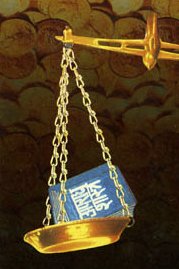Shukraniti, Śukranīti, Śukraniti: 4 definitions
Introduction:
Shukraniti means something in Hinduism, Sanskrit. If you want to know the exact meaning, history, etymology or English translation of this term then check out the descriptions on this page. Add your comment or reference to a book if you want to contribute to this summary article.
The Sanskrit terms Śukranīti and Śukraniti can be transliterated into English as Sukraniti or Shukraniti, using the IAST transliteration scheme (?).
In Hinduism
Arthashastra (politics and welfare)
Source: Google Books: The History and Chronology of Gunpowder and Gunpowder WeaponsAccording to Oppert, the Sukraniti is written by Shukracharya, also variously known as Usanas, Maghabhava, Kavi, Kavya, Bhargava, Sadasarichis, Dhaityaguru and Dhisnya.
The version of Sukraniti to which Oppert refers, comprised four sections, with a fifth supplementary section at the end. The first section specificies the duties of a king, the second that of the crown price; the third section pertains to income and expenditure on servants and wages, and the fourth section is subdivided into seven chapters laying down, respectively, maxims on friendship, enmity, treasury, administration, revue, arts, sciences, social laws, fortresses and the army. The last chapter of section 4 of Sukraniti is of importance to the scholar examining the ancient Hindu military system.

Arthashastra (अर्थशास्त्र, arthaśāstra) literature concerns itself with the teachings (shastra) of economic prosperity (artha) statecraft, politics and military tactics. The term arthashastra refers to both the name of these scientific teachings, as well as the name of a Sanskrit work included in such literature. This book was written (3rd century BCE) by by Kautilya, who flourished in the 4th century BCE.
General definition (in Hinduism)
Source: Wisdom Library: HinduismŚukranīti (शुक्रनीति, “elements of polity”) is the name of a Sanskrit work possibly written by Śukrācārya. Among the contents are subjets such as politics and firearms. The earliest date of authorship was suggested by Oppert, who thought the manuscript was written during the Gupta period (5th-6th century A.D.).
Languages of India and abroad
Sanskrit dictionary
Source: Cologne Digital Sanskrit Dictionaries: Aufrecht Catalogus Catalogorum1) Śukranīti (शुक्रनीति) as mentioned in Aufrecht’s Catalogus Catalogorum:—nītiśāstra. B. 3, 128. Oudh. Xiii, 118. Np. V, 50. Oppert. 7501. See Nītisāra.
2) Śukranīti (शुक्रनीति):—nītiśāstra. A work chiefly borrowed from the Kāmandaka. Gov. Or. Libr. Madras 97. Stein 105.
3) Śukranīti (शुक्रनीति):—Ulwar 1488.
4) Śukranīti (शुक्रनीति):—Bc 324.
Source: Cologne Digital Sanskrit Dictionaries: Monier-Williams Sanskrit-English DictionaryŚukranīti (शुक्रनीति):—[=śukra-nīti] [from śukra] f. Name of [work]
Sanskrit, also spelled संस्कृतम् (saṃskṛtam), is an ancient language of India commonly seen as the grandmother of the Indo-European language family (even English!). Closely allied with Prakrit and Pali, Sanskrit is more exhaustive in both grammar and terms and has the most extensive collection of literature in the world, greatly surpassing its sister-languages Greek and Latin.
See also (Relevant definitions)
Partial matches: Shukra, Niti.
Starts with: Shukranitisara.
Query error!
Full-text (+72): Laghunalika, Anivartin, Nalastra, Shukra, Brihannalika, Agnicarna, Niti, Arjuna, Khadira, Dhava, Haritaki, Shallaki, Arka, Bhallata, Kashmari, Bibhitaka, Karamada, Vijasaraka, Pitadru, Naravela.
Relevant text
Search found 32 books and stories containing Shukraniti, Shukra-niti, Śukra-nīti, Sukra-niti, Śukranīti, Śukraniti, Sukraniti; (plurals include: Shukranitis, nitis, nītis, Śukranītis, Śukranitis, Sukranitis). You can also click to the full overview containing English textual excerpts. Below are direct links for the most relevant articles:
Hindu Architecture in India and Abroad (by Prasanna Kumar Acharya)
Architecture in Miscellaneous treatises < [Chapter 3 - Classical or post-Vedic Architecture]
Chapter 7 - The age of the Manasara
Mahabharata (English) (by Kisari Mohan Ganguli)
Section IV < [Aranyaka Parva]
Section CCCXXXVI < [Mokshadharma Parva]
Section VII < [Asramavasa Parva]
Manusmriti with the Commentary of Medhatithi (by Ganganatha Jha)
Verse 7.140 < [Section XI - Customs-Duties]
Verse 8.10 < [Section III - Constitution of the Court of Justice (continued)]
Verse 7.45 < [Section IV - Duties of the King]
Nitiprakasika (Critical Analysis) (by S. Anusha)
Weapons and War in Nīti works < [Chapter 1]
Other Sources on Vyūhas < [Chapter 4]
Pināka (Trident) < [Chapter 3]
Shukra Niti by Shukracharya (by Benoy Kumar Sarkar)
Chapter 4.1 - Characteristics of Friends
Chapter 2 - The Functions of the Crown Prince and other State Officials
Vyavaharamala: a text on Indian jurisprudence (by P. V. Rajee)
5. The texts of law codes in Aryan civilization < [Chapter 1 - Introduction]
1. Introduction < [Chapter 3 - Nature and extent of the Vyavaharamala]
1. Introduction < [Chapter 2 - The place of Vyavaharamala in Sanskrit juridical texts]